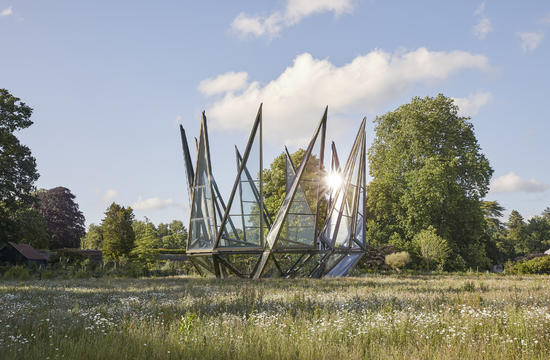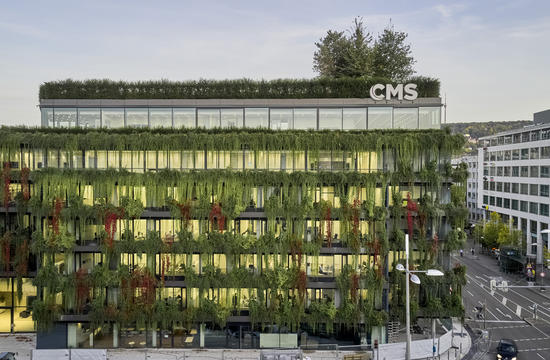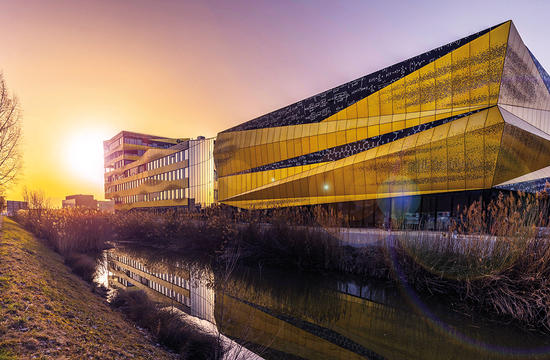Modern style embraces Late Gothic
Text: Nina Pöltl | Photos: Gustavs & Lungwitz, Hunsrücker Glasveredelung Wagener GmbH & Co. KG, glasfaktor Ingenieure GmbH
Prof. Dr.-Ing. Gerhard Glaser is a contemporary witness, architect and former state conservator of the German federal state of Saxony. Over a period of decades, he fought for the preservation of the oldest Gothic church in Dresden and then, following its destruction, for a proper and fitting memorial. The Church of St. Sophia Memorial will finally be inaugurated in 2019. The memorial is an architectural masterpiece, in which the abstracted “Busmannkapelle” is surrounded by an enormous glass showcase. A special self-supporting glass construction has facilitated the creation of an harmonious exterior façade.

It is February 13, 1945, a fire-storm sweeps through Dresden at night and razes an area of 15 square kilometres to the ground in the Baroque city. Over 20,000 people perish, and large parts of the city centre are destroyed: the Church of Our Lady, Semper Opera House, Zwinger Palace, Albertinum Museum and the Royal Palace are all ablaze. The force of the destruction cuts to the heart of the Church of St. Sophia, the oldest Gothic church in Dresden, built around 1350, and the annexed “Busmannkapelle”, built around 1400. Nevertheless, the Church of St. Sophia is still considered one of the best-preserved landmark ruins in the Elbe metropolis after the Second World War.
The people of the city, entire faculties of the TU Dresden and the former President of the People's Chamber of the GDR give massive support to its preservation. For a short period, the Church of St. Sophia even ranks second in a register of 40 listed landmark ruins. When Walter Ulbricht, Secretary-General of the Socialist Unity Party, interferes in the case, the situation worsens dramatically. At the time, Ulbricht was busy establishing Stalinist socialism in the GDR. A Christian view of life did not fit in with the prevailing atheistic, antihistorical world view. In 1960, he ostentatiously removes the Church of St. Sophia from the city model of Dresden.

However, a young Gerhard Glaser is also active. It is not too late yet! He is 25 years old, has just completed his architectural studies at the TU and has been working as an architect for a few months in the masons' guild charged with renovating the Zwinger Palace complex in Dresden. His job is to rebuild the badly damaged Albertinum, which today houses parts of the Dresden State Art Collections featuring unique art treasures from around the world. In 1962, he tries to prevent the demolition of the landmark ruin with a leafleting action, but by doing so opposes the ideology of the GDR regime. Together with three former fellow students and with the help of other students, he distributes leaflets in letter boxes belonging to politically influential people. His actions have consequences: Gerhard Glaser and his colleague Hermann Krüger are sitting at their drawing boards in the workshop when the door to the draughtsman's room suddenly bursts open.

Two well-dressed gentlemen enter. They identify themselves as Stasi officers. The two architects are politely asked to accompany them for questioning. At this moment, Gerhard Glaser assumes that his action to protect the monument will be punished with a year and a half in prison. “When, during the interrogations, they read from my diaries they have confiscated, I imagine I will get another year on top. After endless rounds of gruelling interrogations lasting well into the night, I suddenly hear the words, 'We can stop all this if you work for us in future.' The next morning at 5 o'clock, the cell door suddenly opens and I am released. I had reckoned with everything, but not with being released so quickly. I only learned why ten years later”, recalls Professor Glaser.
His release was due to the intervention of then General Director of the State Art Collections and died-in the-wool Stalinist, Max Seydewitz. It was his job was to organise the accommodation of art treasures that had come back from the Soviet Union and establish a collection in the Albertinum. On the night of the arrest, he called the head of the Stasi and said: “If those two guys are not sitting at their drawing boards again by tomorrow, then I'm supporting Kurt Hager.” After Walter Ulbricht, Kurt Hager was the most important man in the GDR. Seydewitz's project to establish the Albertinum would have come to a standstill without the two young architects, which is why they were released so quickly.

Ultimately, all their efforts remained unsuccessful. By 1963, the reconstructible ruin had been demolished in an act of cultural barbarity. In the end, all that remained of the “Busmannkapelle” were a few stones from the south window, the altar, four console stones and parts of bases of the vault. In the years that followed, the largest restaurant complex in Dresden – the “Feeding Cube” – was built on the site of the Church of St. Sophia.

The preservation of historical buildings runs like a golden thread through the life of Professor Glaser. Soon he is Deputy Head of the Construction Department at the Central Institute for the Preservation of Historical Monuments. In the mid seventies, he establishes “VEB Denkmalpflege”, a construction company specialising in preservation work. In 1982, he becomes Chief Conservator of the Central Institute for the Preservation of Historical Monuments and is made responsible for the old state of Saxony, which was restored in 1990. Only after the fall of the Berlin Wall and the reunification can he resume his fight for the Church of St. Sophia. In 1998, he is awarded the Order of Merit of the Federal Republic of Germany for his extraordinary achievements.

An appropriate reminder of the city's oldest Gothic church needs to be created! Following the peaceful revolution, Professor Glaser immediately contacts the new political forces in the city. With a great deal of dedication, the “Bürgerstiftung Dresden” community foundation, established in 1999, and the development association, founded a year earlier, succeed in making sure that the Church of St. Sophia manifests itself in consciousness of the public again. Today, the “Bürgerstiftung Dresden” community foundation owns the Memorial to the Church of St. Sophia, which will be completed in 2019 after almost 25 years of planning and construction.

The design by the architects Gustavs & Lungwitz was awarded 1st prize in the 1995 ideas competition. The abstraction of the chapel in exposed concrete restores the architectural fragments of the originally preserved “Busmannkapelle" in their old spatial relation: this includes the window fragments and the portrait busts of Lorenz Busmann and his wife who the “Busmannkapelle” was named after.
Where the St. Sophia church once stood, the paved floor plan now reminds us of the church's destruction. Five abstract pillars loom out of nowhere like monuments. They are built on the site where the five south-facing buttresses once supported the two-naved hall church. Metal profiles simulate the structure of the former ribbed vault. The “Room of Silence” can be found in the basement, where two large stones from the original structure of the Church of St. Sophia, 12 gravestones from the 17th Century and facing bricks from the church interior are exhibited. A 13.5 m-high glass shell with a 22 m x 12 m base encloses the memorial.

The glass shell, which takes the form of an oversize showcase, represented a real challenge in engineering. In contrast to the Ideas Competition, the supporting principle of the glass façade has been altered from a cable construction to an internal glass construction for financial reasons. The new all-glass façade was designed by architect Siegmar Lungwitz. From the offices of glasfaktor Ingenieure in Dresden, static and constructive details have been implemented as part of a ZiE (approval in the individual case). The reinforcement of the four-sided glass façade is achieved by the substantial inner space shell. What is special is that the huge façade panes, weighing up to 840 kg, are not supported by a metallic post and beam construction – as favoured by representatives of the client – but are rather glued to 13 m free-spanning glass swords. The glass forms the load-bearing element. The goal was to create a façade surface that is as transparent and homogeneous as possible. A conventional mullion-transom façade with chair rails would have failed to meet the sophisticated demands of the design for the outer shell. The engineers from glasfaktor brought in RAICO during the pre-planning phase. Together, they developed a special glass top construction featuring a flat pressure plate, which is sunk into the glass surface via a specially milled edge to ensure a smooth and homogeneous façade surface. The RAICO top construction is bonded to the glass fin over a stainless steel U-profile. Neither the chairs, plates nor a single bolt can be seen from the outside. This represents an extremely elegant solution, where the glass surface is completely smooth and the RAICO profiles remain invisible between the individual panes.
Almost a quarter of a century has passed since the bombing of Dresden. What was destroyed in a single night and then finally destroyed by the GDR regime remains lost forever. Today, the “Busmankapelle Memorial” commemorates the abuse of power during the Third Reich and the 40 years thereafter. The monument is a memorial and meeting place in one, a place of gathering and peace and a place of reflection.





